Lisbon’s visual identity comes alive through a kaleidoscope of azulejo tiles, pastel-painted buildings, and streets that wind like ribbons through its seven hills. The Portuguese capital effortlessly blends centuries-old craftsmanship with contemporary design innovation, creating a cityscape that feels both timeless and thoroughly modern.
Around every corner, this city offers a masterclass in color theory, pattern play, and architectural harmony. Here is a list of 15 visually stunning destinations where design enthusiasts can experience Lisbon’s most Instagram-worthy aesthetics while appreciating the thoughtful craftsmanship behind them.
LX Factory
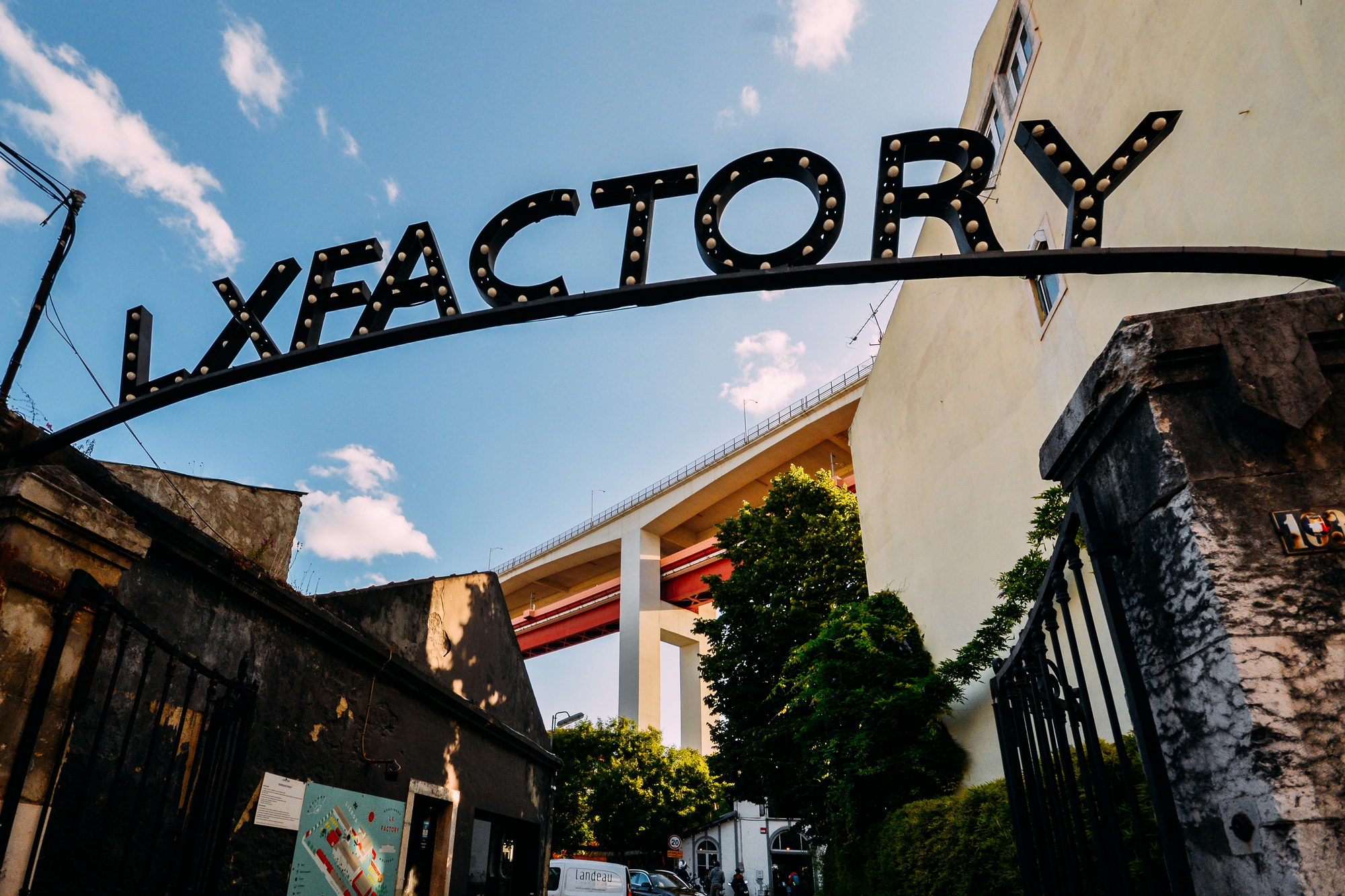
This former industrial complex transformed into a creative hub showcases how Lisbon repurposes its manufacturing past for its creative future. Massive factory windows flood studio spaces with natural light while original structural elements provide a framework for contemporary interventions.
The complex houses design studios, concept stores, and restaurants where industrial materials meet vibrant color schemes that pop against concrete and steel backdrops.
Embaixada

Housed in a 19th-century Moorish-inspired palace, this concept store collective transforms historic architecture into a showcase for contemporary Portuguese design. The central courtyard creates a dramatic entrance with patterned tiles and wrought iron details that frame the shopping experience.
Each room maintains its aristocratic bones while hosting carefully curated collections of fashion, homeware, and accessories from the country’s most innovative designers.
MAAT

The Museum of Art, Architecture and Technology presents a masterpiece of contemporary design with its undulating white ceramic façade that reflects the Tagus River. The rooftop walkway creates a public space that merges with the building itself, blurring the lines between architecture and landscape.
Inside, the curved white walls provide a neutral canvas for installations that often incorporate cutting-edge digital displays and interactive elements.
Like Travel Pug’s content? Follow us on MSN.
Pink Street
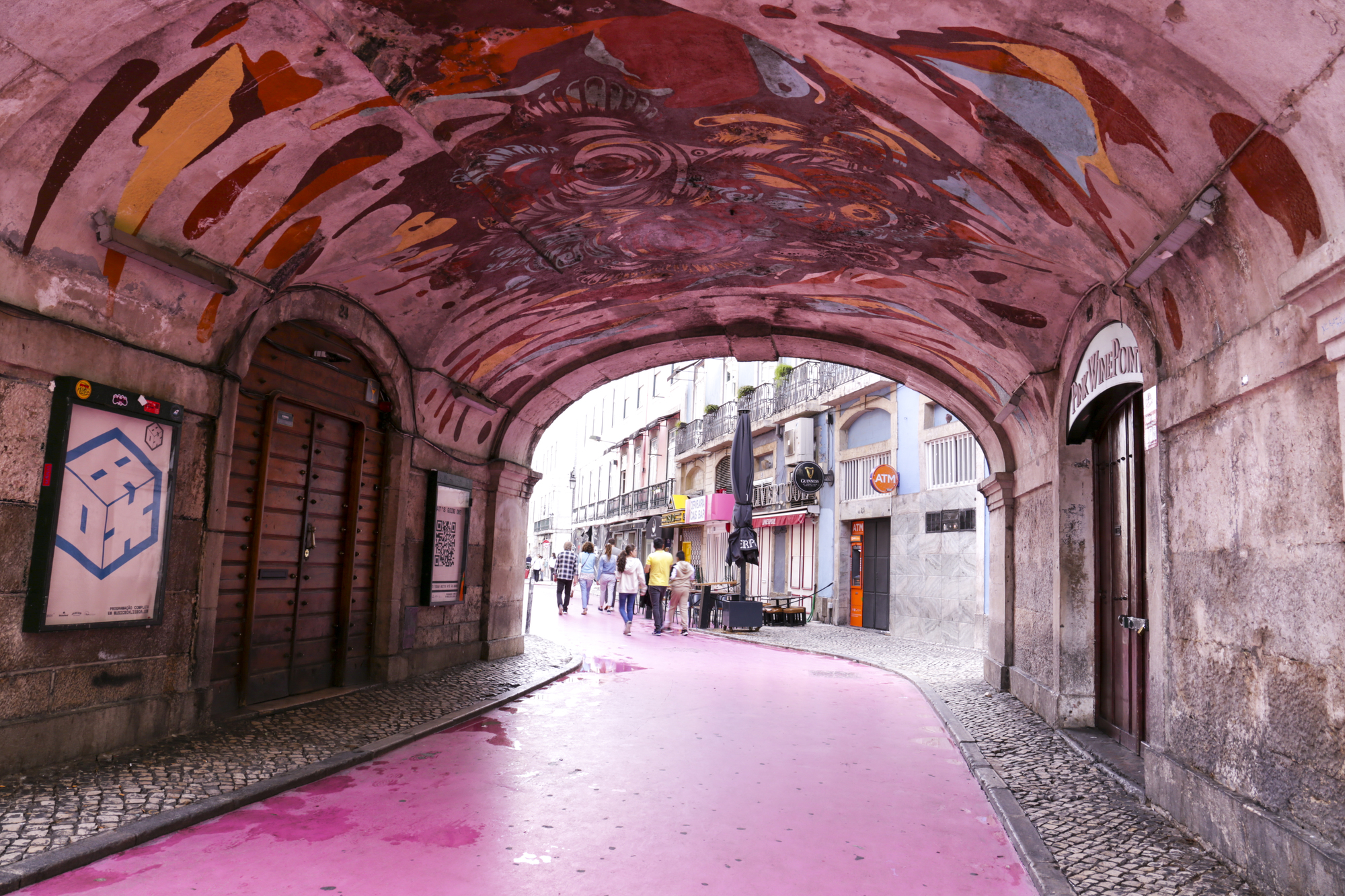
This pedestrian thoroughfare earned its name from the vibrant pink paint covering its entire length, transforming a former red-light district into a design destination. The concentrated color creates a surreal corridor that contrasts dramatically with the traditional architecture rising on either side.
Stylish bars and clubs along the route have embraced the bold palette in their signage and façades, creating a cohesive design experience that extends from pavement to rooftop.
Time Out Market

This renovated market hall demonstrates how thoughtful design can transform a utilitarian space into a culinary and visual feast. The soaring industrial ceiling features original architectural details now painted in crisp black and white to frame the bustling scene below.
The communal tables crafted from local wood create an ordered grid that brings calm to the energetic space while directional signage in bold typography guides visitors through culinary offerings.
Praça do Comércio
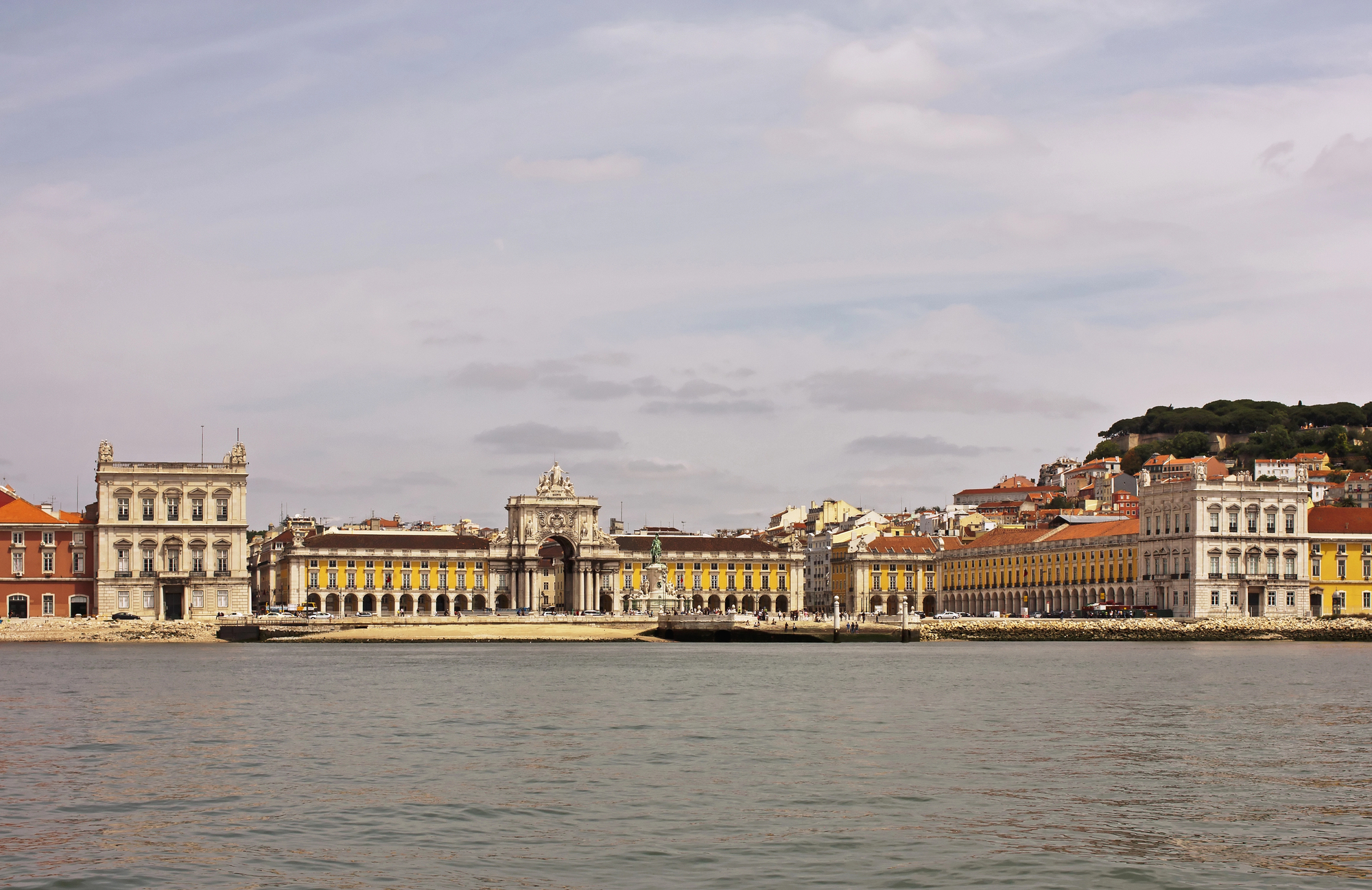
This magnificent riverside square represents the grandeur of 18th-century urban planning with its perfect U-shape opening to the Tagus. The butter-yellow arcades provide a rhythmic frame for the central plaza while offering sheltered passages lined with cafés and shops.
The triumphant arch leading to Rua Augusta creates a dramatic threshold between the expansive square and the narrow shopping street beyond.
Like Travel Pug’s content? Follow us on MSN.
Principe Real
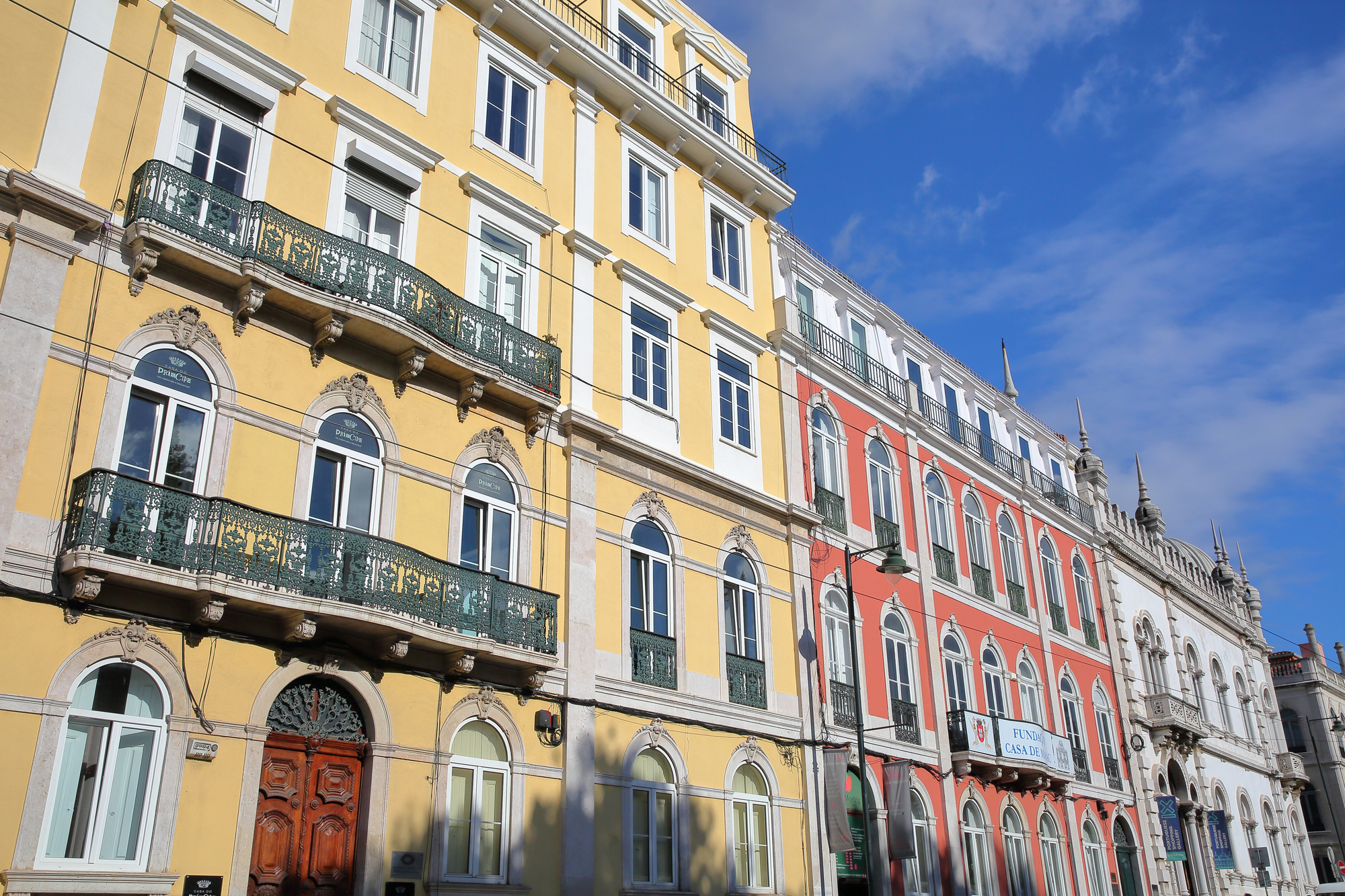
This upscale neighborhood serves as an open-air gallery of residential architecture spanning several centuries of Portuguese design history. Mansions painted in saturated blues, pinks, and yellows stand alongside more restrained neoclassical façades, creating a master class in color theory.
The central garden, with its dome of ancient cedar branches, provides a natural canopy over design-forward boutiques that line the surrounding streets.
Bairro Alto Hotel

This boutique accommodation showcases how contemporary luxury design can honor historical context while creating thoroughly modern spaces. The restored yellow façade maintains its 18th-century proportions, while interiors feature Portuguese materials reinterpreted through a modernist lens.
The rooftop bar presents a study in indoor-outdoor flow with traditional tile patterns reimagined in contemporary scale and application.
Village Underground Lisboa
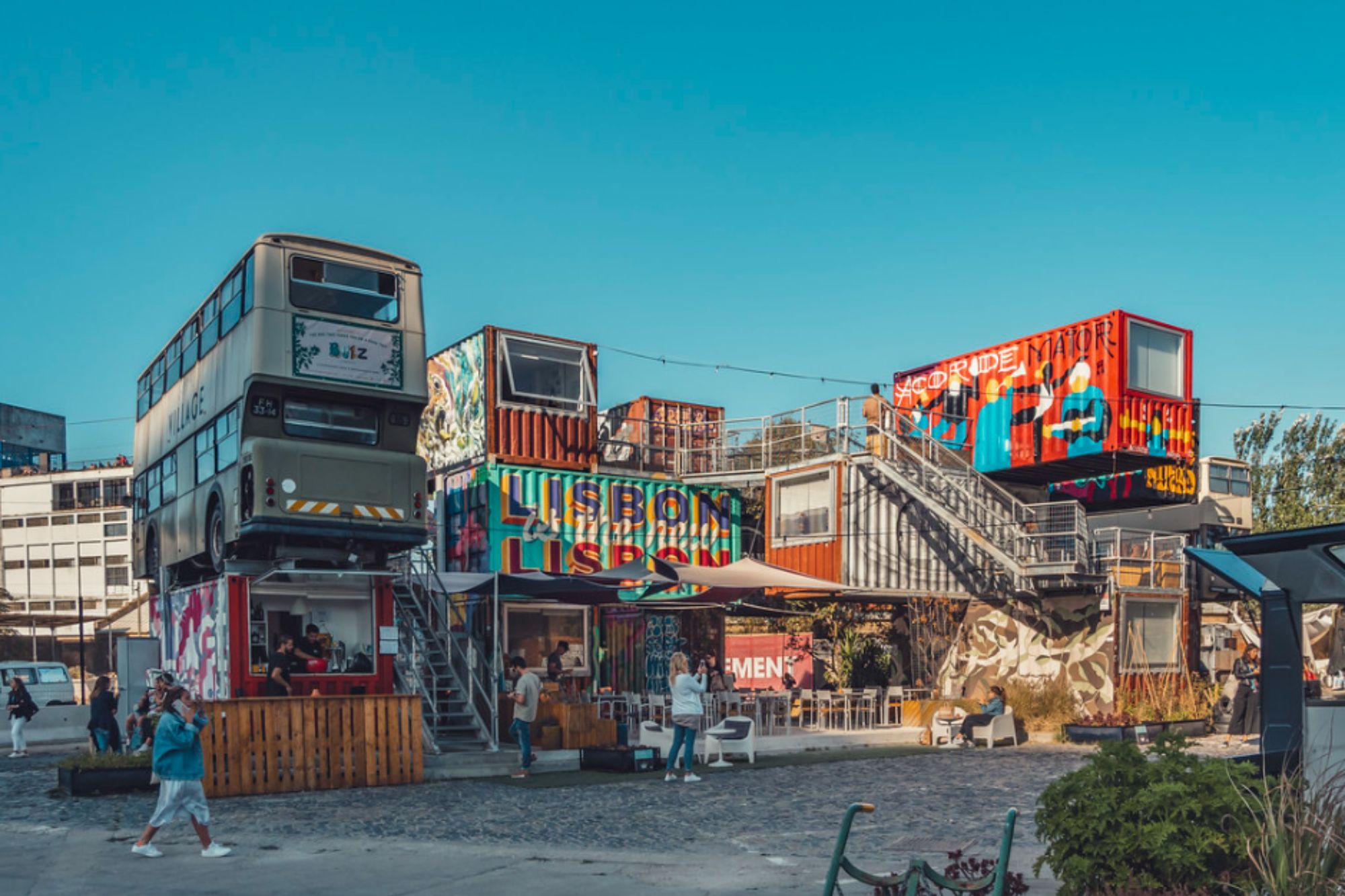
This creative workspace, constructed from shipping containers and retired double-decker buses, demonstrates innovative adaptive reuse in vibrant primary colors. The stacked containers create a Mondrian-like composition against the sky, functional yet playfully artistic in their arrangement.
Inside, these industrial shells have been transformed into light-filled studios with minimalist interiors that let the unusual architecture take center stage.
Like Travel Pug’s content? Follow us on MSN.
Cervejaria Ramiro
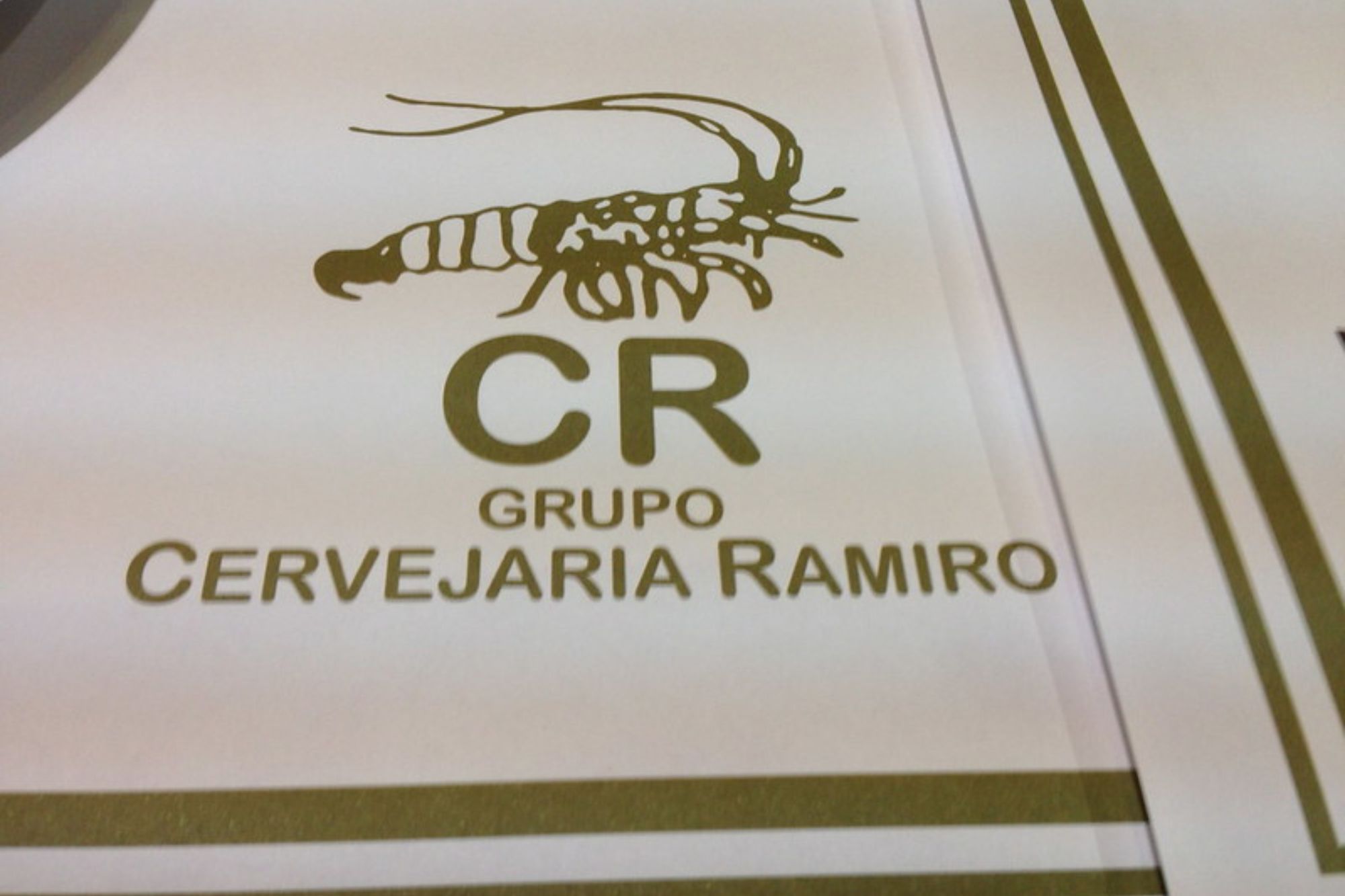
This beloved seafood restaurant proves that authentic design doesn’t require designer labels—its unchanged 1950s interior offers a masterclass in functional beauty. The tiled walls in classic white provide a practical yet visually pleasing backdrop for dining, while brass accents have developed a natural patina over decades of use.
The open kitchen, with its steam-filled atmosphere, creates a theatrical element where food preparation becomes performance art.
Miradouro da Senhora do Monte
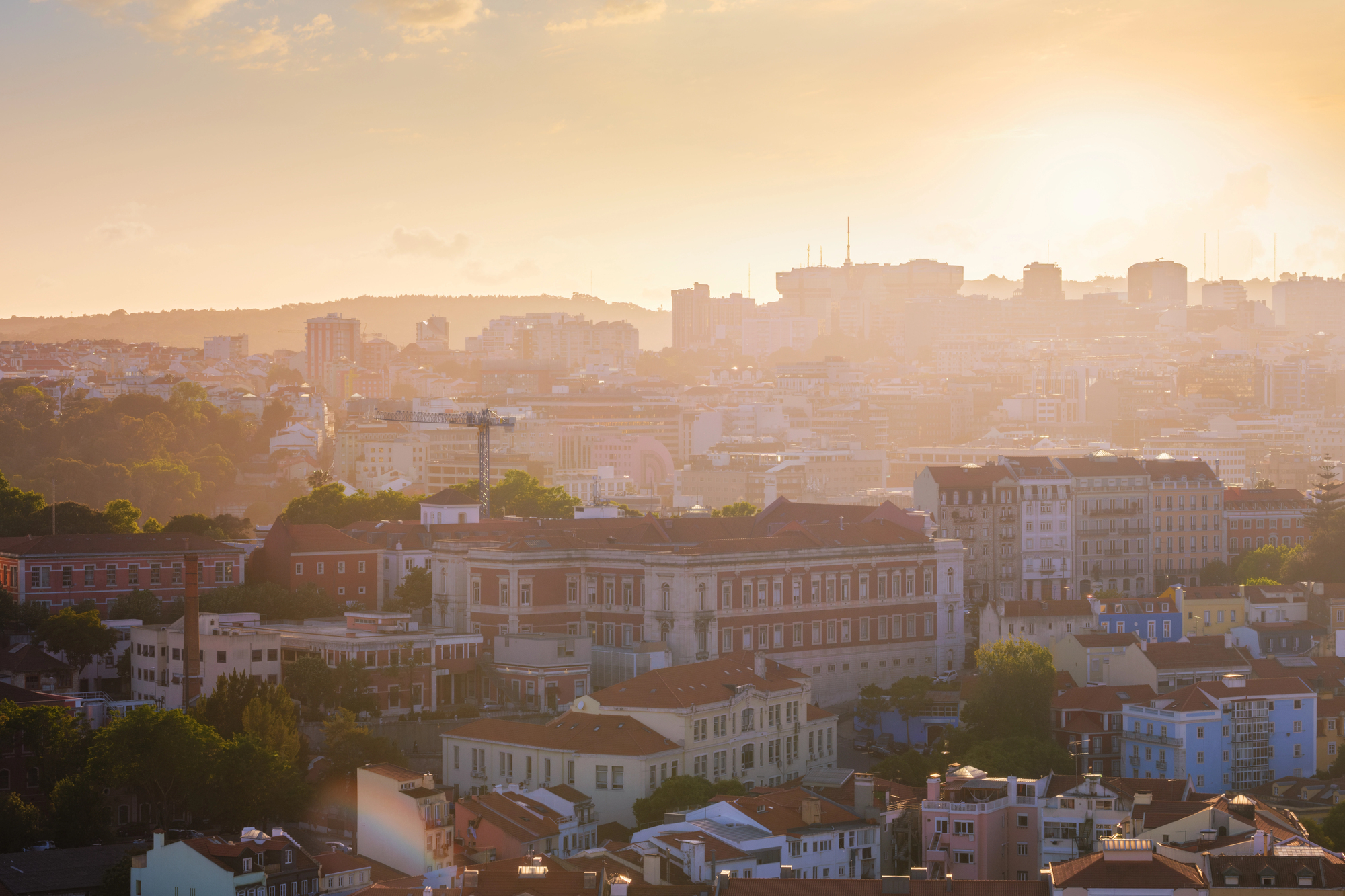
This hilltop viewpoint offers Lisbon’s most comprehensive panorama and demonstrates how the city’s topography shapes its visual identity. The terracotta roofscape creates an undulating pattern punctuated by white church domes and pastel-painted façades climbing up and down the hills.
The viewing platform’s simple stone walls frame different segments of the cityscape, like living paintings changing with the light throughout the day.
A Vida Portuguesa

This concept store, housed in a former soap factory, celebrates Portuguese design heritage through meticulously preserved packaging and products. The original wooden shelving creates a warm framework for colorful displays organized with museum-like precision and retail expertise.
The shop illuminates how commercial graphic design through the decades forms an important visual record of cultural aesthetics and values.
Like Travel Pug’s content? Follow us on MSN.
Gulbenkian Museum Gardens
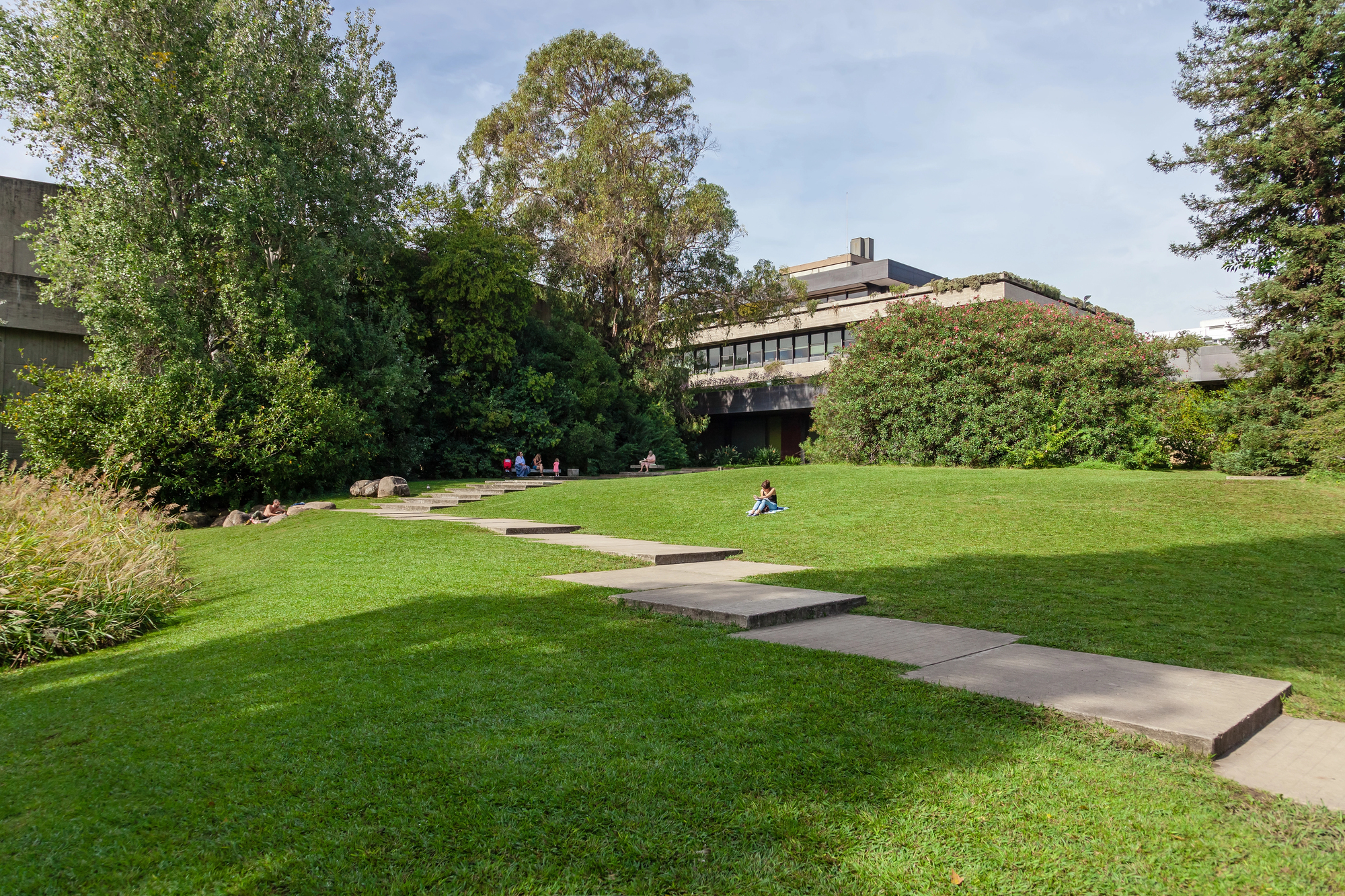
These modernist gardens surrounding the art museum demonstrate how landscape design can be as precisely composed as any gallery installation. The reflecting pools create horizontal planes of perfect stillness that mirror sculptural elements and seasonal plantings.
The concrete pathways guide visitors through outdoor ‘rooms’ defined by carefully positioned trees and shrubs selected for their architectural qualities.
Santa Engracia Church
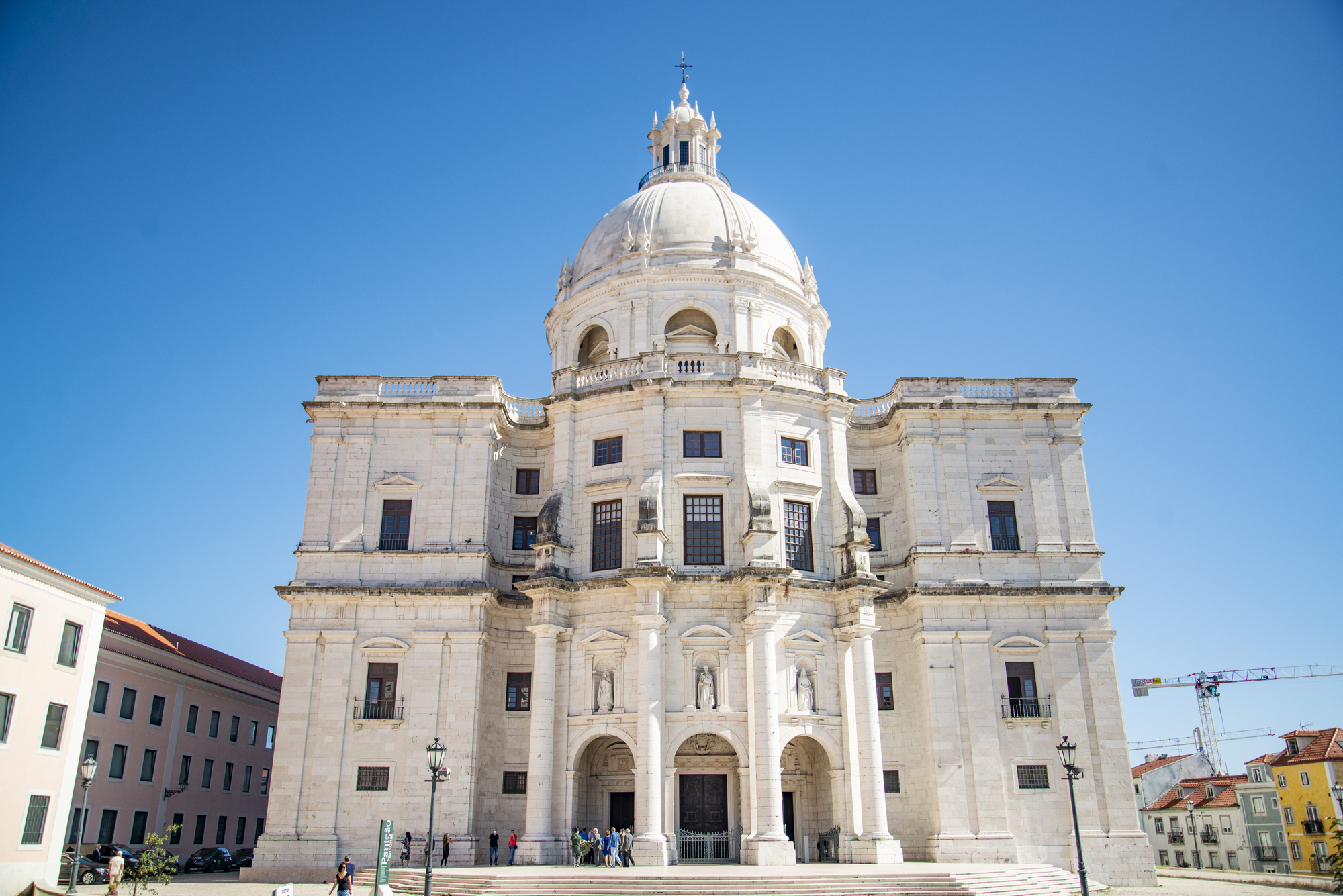
This 17th-century marvel, now the National Pantheon, showcases baroque design principles with its dramatic use of scale and ornamentation. The soaring white marble interior creates an atmosphere of ethereal lightness despite the massive stone construction.
The geometric patterns in contrasting stone on the floor create a counterpoint to the more organic decorative elements on columns and domes.
Liberdade Avenue
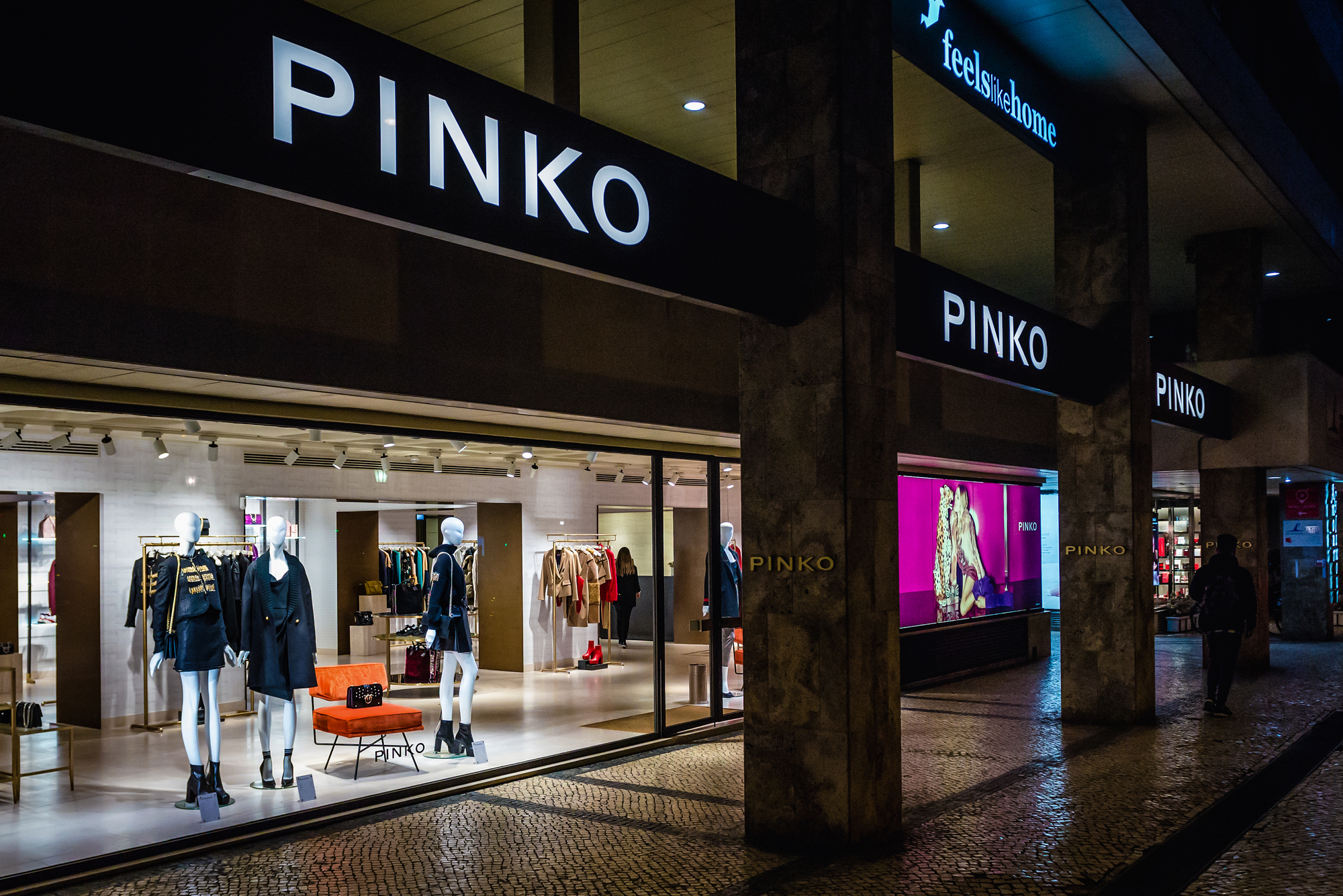
This grand boulevard, inspired by Parisian urban planning, features a central promenade paved with Portugal’s signature black and white stone patterns. The mosaic sidewalks display abstract waves, stars, and geometric motifs created through the labor-intensive process of hand-setting small stones.
The tree-lined avenue demonstrates how thoughtful urban design creates spaces that remain relevant and beautiful across centuries, adapting to changing uses while maintaining their fundamental character.
Like Travel Pug’s content? Follow us on MSN.
Visual Poetry in Stone and Light
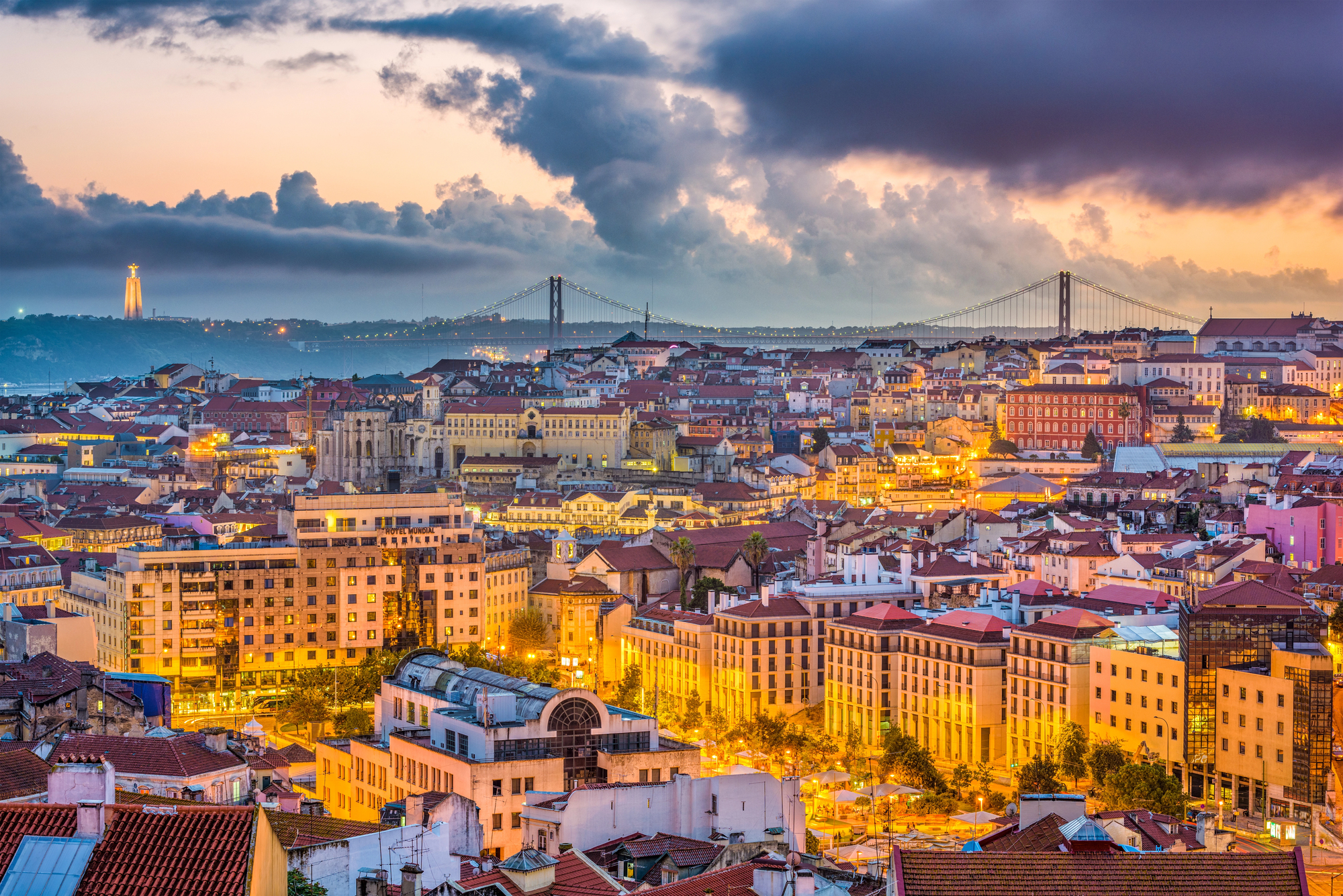
These fifteen landmarks reveal Lisbon as a city that has always understood the power of visual communication across materials, scales, and centuries. From hand-painted tiles that have told stories for hundreds of years to cutting-edge architecture reshaping the riverfront, design remains the language through which Lisbon most eloquently expresses its identity.
Whether appreciating traditional craftsmanship or contemporary innovation, design-minded travelers discover in Lisbon a city that elevates everyday life through thoughtful aesthetics and treats its streets as galleries worthy of curatorial attention.
More from Travel Pug

- Cities Growing so Fast You Won’t Recognize Them in 10 Years
- 13 Destinations Where Tourists Regularly Regret Their Trip
- 20 Obscure WWII Sites Even History Buffs Don’t Know About
- 10 Under-the-Radar Mountain Towns That Are Both Affordable and Beautiful
- Remote Villages in Europe Where You Can Live for Free in Exchange for Work
Like Travel Pug’s content? Follow us on MSN.
